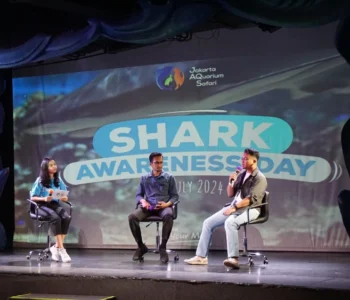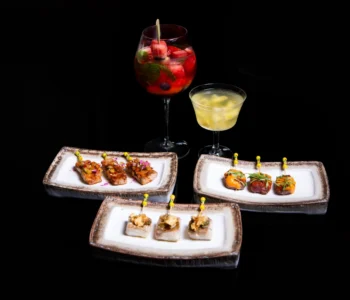Discovering obscure islands in Indonesia can bring the traveler face to face with ancient history, exotic island-bound animals and cultural experiences of extraordinary depths. When I found myself in Buton Island, I knew I had discovered a unique place indeed.
Buton is just off the southeast peninsular of Sulawesi near the gateway to the famous diving area of Wakatobi. It is an island seldom visited, in fact in all the ten years I have spent traveling the islands of Indonesia, I have never met anyone who has been to Buton, so that was a good enough reason for me to go.
When I met my guide at the Bau-Bau ferry terminal he exchanged some quick details with the driver in a language I was not familiar with. “I speak Wolio,” Mukmin said, “but only three kilometers away near the airport, they speak the Cia-Cia language, and thirty-five kilometers away they speak Lasalimu and Kumbewaha language.
In fact, we have seven languages in Buton, so you can imagine the festivals celebrated here at auspicious times of the year. Each of our languages represents a different ethnic group, everyone with their own traditional music, culture, dance and rituals which are honored throughout the year.”
Buton has an interesting and colorful history and records date back to the 16th century when Buton was known as Butung and came under the influence of The Sultanate of Ternate of North Maluku, wielding power in trade, with seafarers and merchant ships coming from far and wide. The lucrative famed spice trade brought a mix of traders from China and beyond through the Sulawesi Islands and the Malukus.
Buton is about the size of Madura, a small island off the coast of Java. In 1542 the kingdom of Buton transformed into a Sultanate, ruled by Sultan Murhum, who was the first Islamic monarch on the island. The island’s major port, Murhum Harbor, in Bau-Bau, is named after him. His home, the Kraton (Sultan’s Palace) sits on a hill high above the town and houses relics including cloth money and items of a bygone era. It is worth a two-hour visit. The fortress surrounding the Butonese Palace claims to be the largest fortress in the world. The Palace is a traditional Butonese house, and the stately four-story building stands firmly without one single nail holding it together. The Buton Sultanate ended in 1951 and in 1960 the last Sultan died. His descendants still live in Bau-Bau.
After a couple of hours at the palace, I went on a discovery tour to find the treasures of Buton and, just out of Bau-Bau, found myself amongst a Balinese procession. A cremation was in progress, and we passed through split gates; traditional Balinese carved entranceways and family compounds, as the procession made its way to the ocean. “Oh yes, I forgot to mention,” Mukmin said, “We also speak Balinese. The Balinese came here as part of the transmigration program of President Suharto (1967-1997).”
Buton is very mountainous, and the drive from Bau-Bau to the high hills consists of long scenic stretches of coastal beaches. My destination was the Lamusango Forest, which is famous for its butterflies. On the way, I passed through rich farmlands where fields of corn and cassava waved in the breeze. An old Javanese eulogy written by Mpu Prapanca dating back to the fifteenth century and the days of the Majapahit Kingdom describes Buton as an island with rich gardens and a sophisticated irrigation system.
We passed a patchwork of fields full of sweet potatoes, cotton, coconut, and betel. Pineapple and banana plantations dot the horizon, and this colorful produce makes its way to the bustling Bau-Bau market on a daily basis. The market is packed full to the brim with fruit and vegetables as well as a bounty of fish.
After two hours on a smooth new road through beautiful forests, I reached my destination. Lamusango Forest was made famous by Alfred Wallace, the British naturalist, explorer and anthropologist (1823 –1913). Wallace collected rare butterfly and insect specimens from the Buton rain forests, spiny forests, and desert areas. On arrival, I followed a neat concrete footpath into the forest, which looked purpose built for wheelchair access, and entered the land of not only butterflies but also the Anoa.

This exotic creature is dog sized and sports a rather large set of tusks. Aspin, our local guide, warned us, “You must not be loud or obnoxious when you are in this forest. If we enter this place, disbelieving in any way of the existence of the Anoa, he will present himself, so please can I have your agreement before we go any further?” I hurriedly agreed, as I was already three kilometers into the trek! I found out later I did not need to worry too much as the Anoa is nocturnal.
As I trekked further into the forest, the butterflies became more prolific, and many darted to my left and right, crossing my path on several occasions. It was an absolute delight, and as there are very few tourists to Buton, I felt like I had this place all to myself.

On the way back to the hotel I passed through a beautiful little town, which was painted blue and white. Every house, every fence paling and every warung (eatery) was colour coded, and Aspin told me the town voted on the colour theme, and all the paint was provided for free, in preparation for an official Government visit a few years back. Also, the roads are new – the road I traveled on was built one year ago.
As the sun was setting, I stopped at a viewpoint to take in the beautiful wide, sweeping views of the town and harbour from a high hilltop spot call Wantiro. A string of local warungs selling drinks and food had starry-eyed young people sitting at every table with selfie-sticks out in full force snapping romantic pictures as the prevailing soft light of day fell into night. Bau-Bau is a very pretty town.
Just before I reached my hotel for the night, a big shiny brand new Lippo Plaza with huge flashing neon lights called in streams of Bau-Bau shoppers for socializing, window shopping and gave the town a feeling of prosperity. I preferred the four-story historic Sultan’s palace to the super-modern Plaza, and as I bade farewell to my guide, he slipped me a flyer on the latest cultural festivals coming up on Buton Island, which means that I have earmarked this place for a return visit.
Flights: Regular flights From Jakarta, Makassar, and Kendari to Bau-Bau, Buton Island, Sulawesi
Tour Guide: Mr. Fernandes Arung –
Kendari, South East Sulawesi
E: fernandes@usnsj.com
Recommended reading:
The Malay Archipelago by Alfred Russel Wallace.
A travel narrative with sketches of man and nature.
Stephanie Brookes is a travel writer and blogger with tales from Indonesia and beyond. Please see www.travelwriter.ws
Follow on www.facebook.com/stephtravelwriter
David Metcalf runs photography and cultural tours in Indonesia, Myanmar, India and USA. David operates Taksu Photo Gallery in Ubud, Bali. He supports education and health programs in Bali and Kalimantan.
www.davidmetcalfphotography.com
http://www.taksuphotogallery.com
www.instagram.com/davidmetcalfphotography













